
Every day, Santiago de Compostela is visited by hundreds and even thousands of people. Most of them are pilgrims who conclude the Camino de Santiago in this city, Galicia’s capital. Other people are travellers who choose it as their main destination among their itineraries. Its cathedral is its main tourist attraction, a mix of Baroque, Romanesque, and Gothic architectural styles, built between the years 1075 and 1211. Besides, Santiago de Compostela offers plenty of interesting places to discover, like La Alameda park, Mercado de Abastos or Ciudad Vieja, declared a World Heritage Site by UNESCO. But if that wasn’t enough for you, you should know that its location is perfect. Santiago de Compostela lies in the perfect spot that can be the starting point for many excursions around the city.

View of Torre de Hércules. | Shutterstock
A Coruña is the perfect city for a getaway around Santiago de Compostela. It’s just 46 minutes away by car, but you can also get there by public transportation. The best part is the great variety of activities you can do there, whether your getaway lasts a few days or you prefer a one-day trip. Torre de Hércules, the oldest Roman lighthouse in the whole world, is probably the most emblematic place in A Coruña. But there are many other places, such as its port, Parque Escultórico, the María Pita square, its old town centre and its beaches.
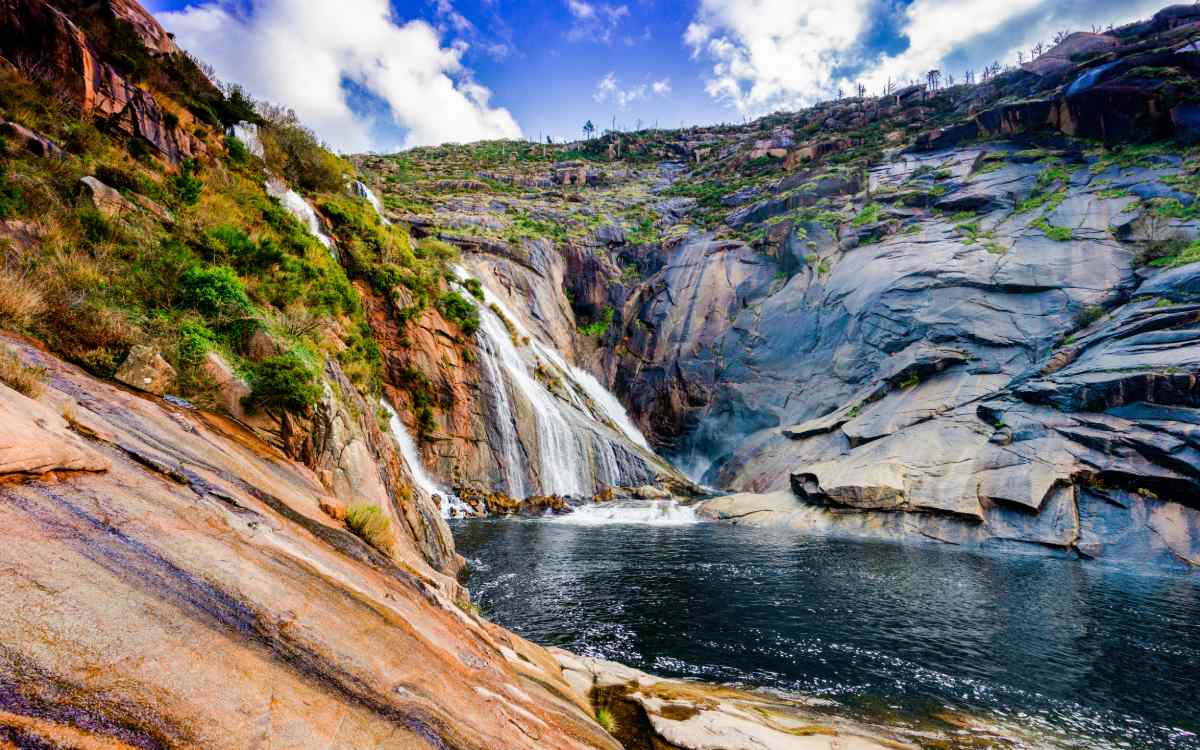
Fervenza de Ézaro. | Shutterstock
In the municipality of Dumbría, in A Coruña province, just 45 minutes away by car from Santiago de Compostela, another mandatory stop is waiting for you. It’s a waterfall called Fervenza de Ézaro. This cascade is also known as Jallas waterfall due to the river that flows into the sea. In addition, it’s the only European river to do so.
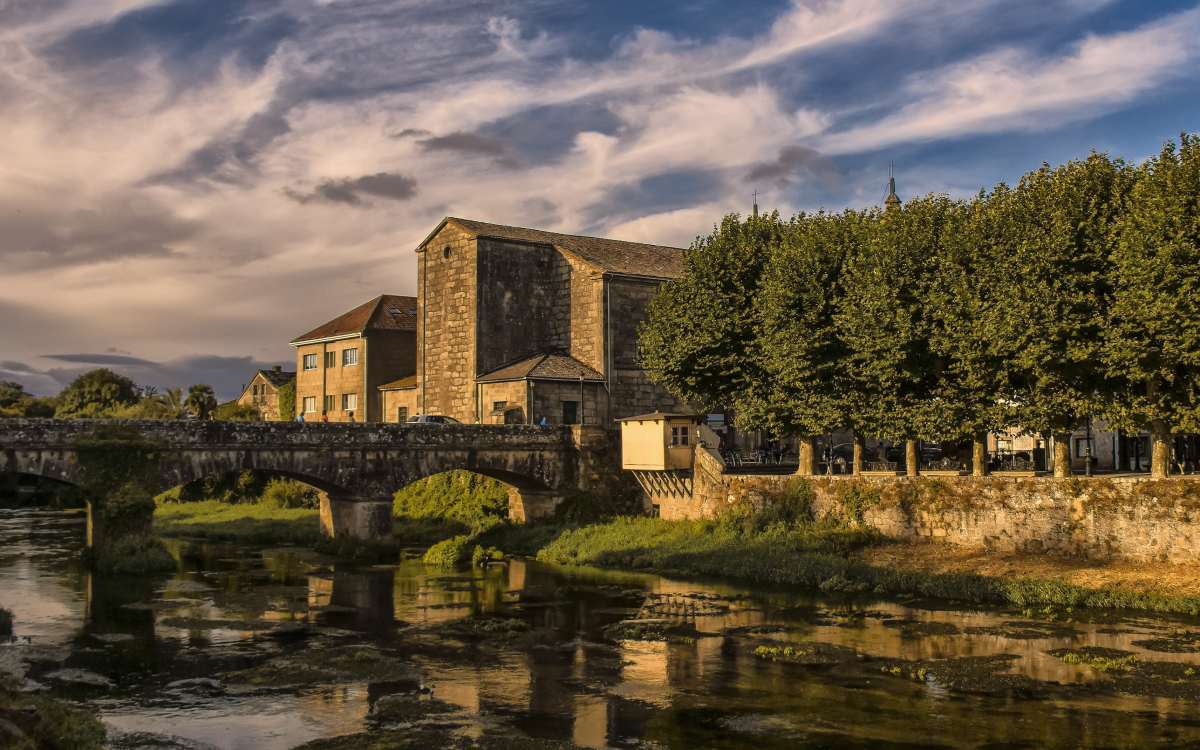
Typical image of Padrón. | Shutterstock
21 kilometres and around 24 minutes away from Santiago de Compostela you will find one of the most famous Galician villages: Padrón. It is known for its peppers, the pimientos del padrón, a type of green pepper native to the crop area of the Francisco de Herbón convent, in Padrón’s parish church. But there is more than that here. This municipality of great historic and artistic heritage lies between the Sar and Ulla rivers and is one of the stops of the Camino Portugués. In Padrón, you will discover places like the Santiago church and the Francisco de Herbón convent, and museums like Casa Museo Rosalía de Castro or Museo Camilo José Cela.

One of the most popular viewpoints in Vigo. | Shutterstock
The city of Vigo, in the province of Pontevedra, had to be on this list as it is one of the best getaways around Santiago de Compostela. In Vigo, you will find the paradisiacal Islas Cíes, but you can also enjoy many other interesting places, such as the Bouza neighbourhood, the O Castro mount, its town centre and the Samil beach. In the last one, you can enjoy a gorgeous beach of clear sand, but the best choice is to watch the sunset if the weather allows you to do it.
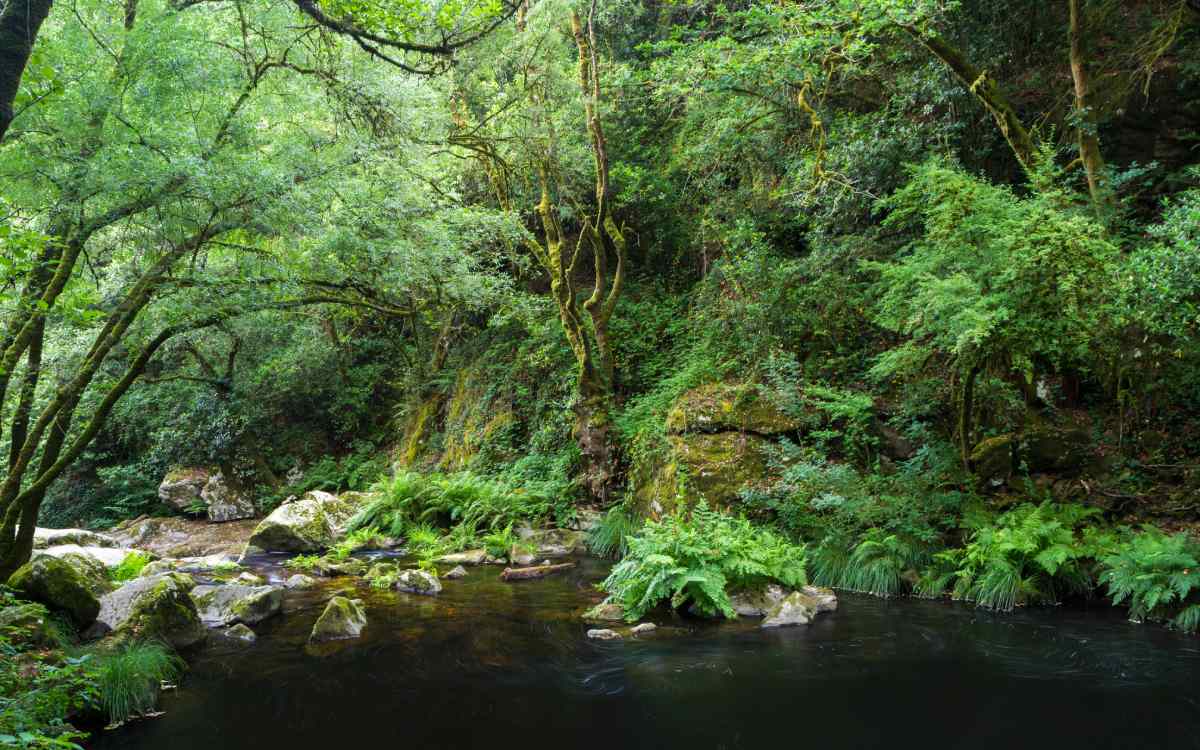
Waterfalls of Toxa. | Shutterstock
In Pontevedra, there is another perfect place for a getaway around Santiago de Compostela, since it’s only 30 minutes away from the city. Silleda is a municipality of 8,900 inhabitants. Its waterfalls, the fervenzas de Toxa, are its main attraction. The water in these cascades falls more than 60 metres, which turns it into one of the highest waterfalls in Spain.
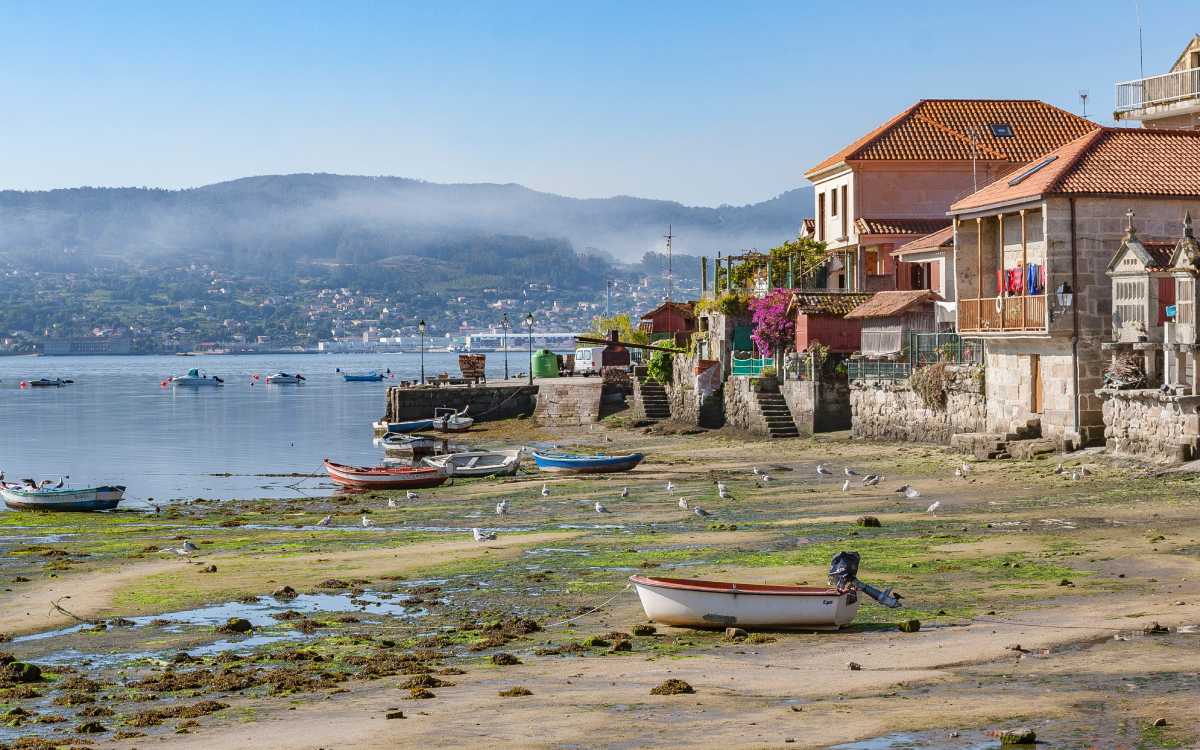
Combarro. | Shutterstock
One of the most famous and beautiful villages in Galicia awaits a little further, 68 kilometres and 46 minutes away from Santiago de Compostela. In this tiny town facing the sea, you will see its famous hórreos, its most characteristic symbol. Its cruceiros are very renowned as well. You should also take a look at San Roque street, Plaza da Fonte, the picturesque do Padrón beach and the do Mar street.

Vilagarcía de Arousa. | Shutterstock
Vilagarcía de Arousa is less than 55 kilometres from Santiago de Compostela. This locality belongs to the Salnés region, in Pontevedra. Here you can walk through its port and promenade, explore its churches, take a route to see its pazos or walk through Europe’s largest laurel forest. This village isn’t specially touristic, but you have to visit its fishing neighbourhoods and its archaeological sites.

View of Caldas de Reis from the Atlantic ocean. | Shutterstock
Caldas de Reis is another of the most beautiful villages in Pontevedra and it’s only half an hour away from Santiago de Compostela. The thermal baths are something to highlight in this village, but there are plenty of tourist attractions, such as the Burgas fountain, the Bermaña bridge, and the botanical garden ‘Carballeira’, located in the urban centre of Caldas de Reis. And, of course, the beautiful waterfalls of Segade are something you must see as well. Due to its close proximity to Santiago de Compostela, this is one of the great getaways we are looking for here.
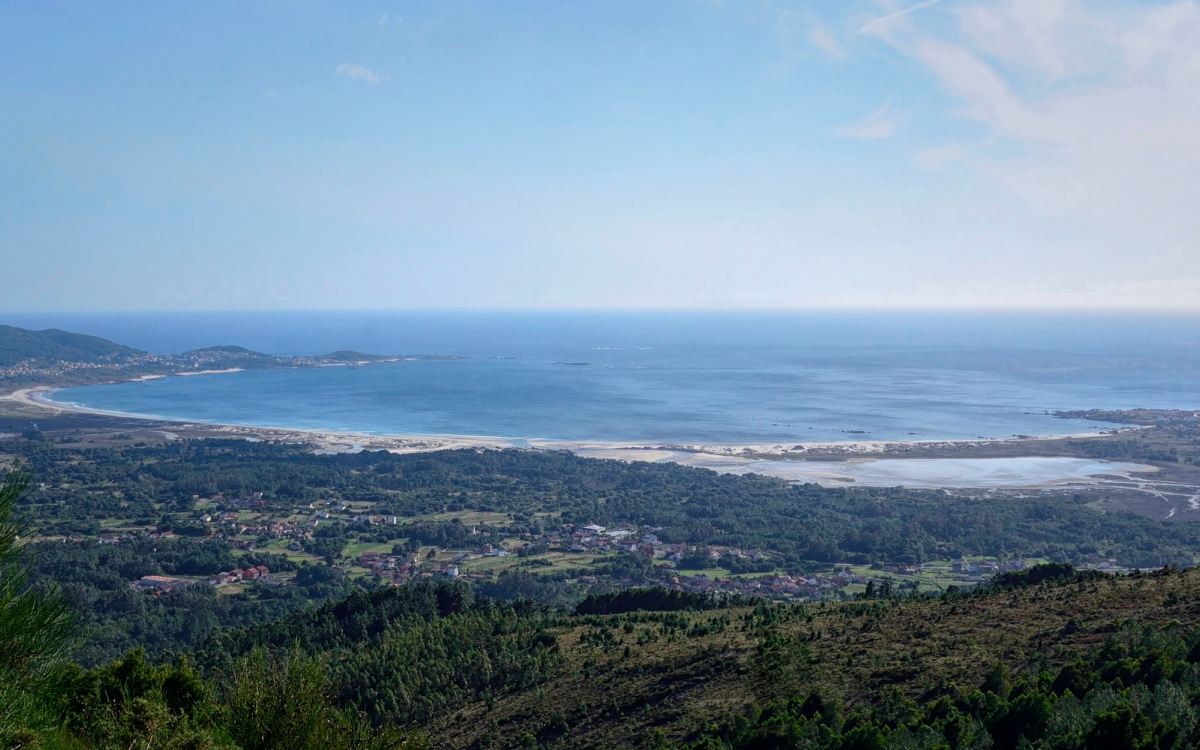
Mirador de Paxareiras. | Shutterstock
The last name on this list belongs to Mirador de Paxareiras, a place we couldn’t not mention. You will enjoy a fascinating panoramic view of the sea and the different beaches of the area from this viewpoint. But there is so much more to see — the towns of Caldebarcos and La Lira and Carnota beach are some of the things you will discover. Besides, cape Finisterre stands in the back. This viewpoint is 5 kilometres away from the protagonist city, a spot where you will be surrounded by a great natural landscape.
You can also read this article in Spanish here.